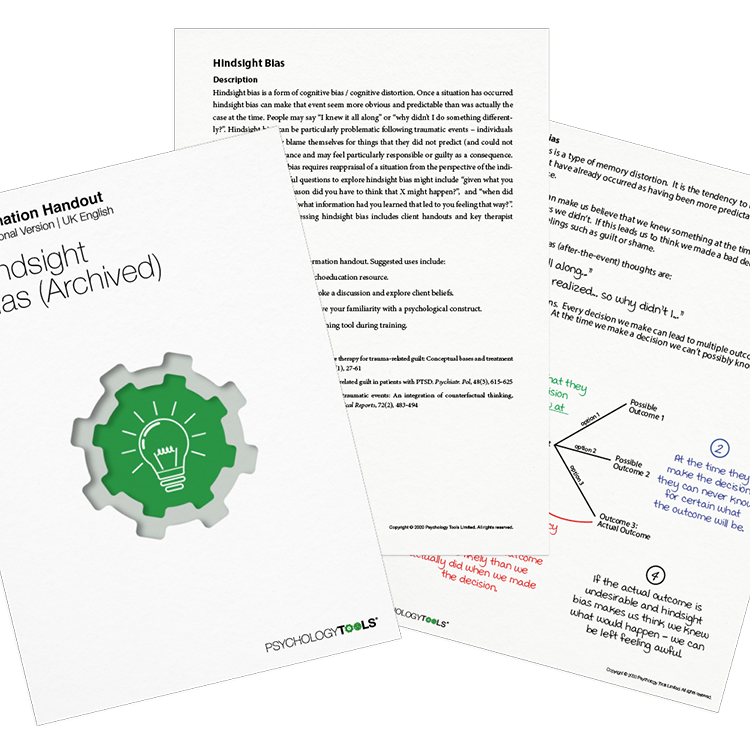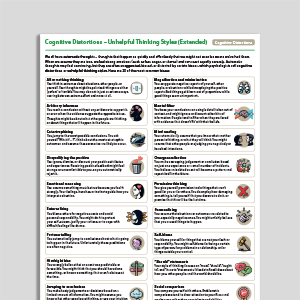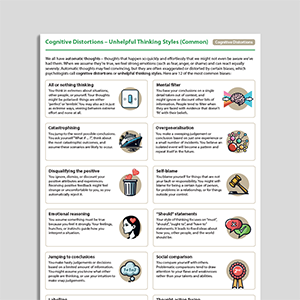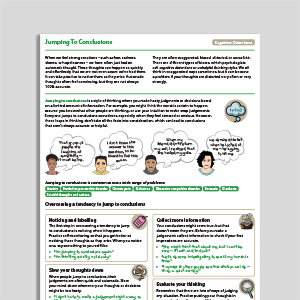Full resource pack (PDF)
Everything you could need: a PDF of the resource, therapist instructions, and description with theoretical context and references. Where appropriate, case examples and annotations are also included.
Information handout only (PDF)
A copy of the information handout in PDF format.
Editable version (PPT)
An editable Microsoft PowerPoint version of the resource.







